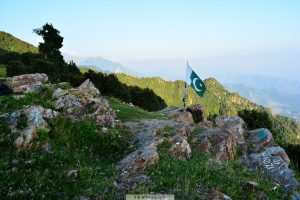According to the Global Terrorism Index 2025, Pakistan was the second-worst country affected by terrorism in the preceding year. This isn’t surprising; three of the world’s ten deadliest terrorist groups — Tehreek-e-Taliban Pakistan (TTP), the Islamic State of Khorasan (ISK), and the Baloch Liberation Army (BLA) — operate in Pakistan. These groups have grown deadlier since the U.S. withdrawal and the Taliban’s return to power in Afghanistan.
Despite obligations under the 2020 Doha Agreement to not allow terrorist groups to use Afghan soil for terrorism in other countries, the Taliban regime has allowed the TTP to use hideouts in Afghanistan to plot attacks in Pakistan.
The Taliban’s ideological patronage of and logistical support to the TTP has emboldened the latter and enabled it to expand its organizational framework and boost its operational strength. Ahead of the U.S. exit from Afghanistan, TTP renewed its oath of allegiance to the Taliban’s Supreme Leader Haibatullah Akhundzada in order to continue living in Afghanistan. The Taliban’s victory in Afghanistan energized the TTP and provided it with a template to emulate for its militant campaign in Pakistan.
The Taliban have refused to disarm TTP, relocate it away from the Afghanistan-Pakistan border area, or restrain it from carrying out attacks in Pakistan. TTP attacks in Pakistan have not only soured Afghanistan-Pakistan ties, resulting in frequent border closures and trade disruption but also compelled Pakistan to carry out air strikes against TTP’s positions in Afghanistan thrice in the last three years. These strikes were meant to signal to the Taliban that while Pakistan respects Afghanistan’s sovereignty, it will not hesitate to respond if TTP continued to use Afghan soil for cross-border attacks in Pakistan.
Another key concern for Pakistan is that the TTP has access to small arms and light weapons worth $7 billion left by the U.S. in Afghanistan. These weapons have added to the lethality and accuracy of TTP’s attacks. Moreover, they are available in Pakistan’s black market.
After assuming power, U.S. President Donald Trump has raised serious concerns about these weapons being used for terrorism. Pakistan has shared his apprehensions, noting that they have imperiled the safety and security of its citizens.
The Taliban’s rivalry with the ISK has also hindered cooperation with Pakistan against TTP. Since the Taliban’s return to power, ISK has positioned itself as the anti-Taliban jihadist group, critiquing it for cutting a deal with the U.S. and giving up “jihad.” Against this backdrop, the Taliban fear that if they take any action against the TTP at Pakistan’s behest, it will benefit ISK as disgruntled TTP elements would gravitate towards ISK. It bears mention that in 2015, when ISK was officially declared the Islamic State’s franchise in the Afghanistan-Pakistan region, it comprised two TTP factions from Orakzai and Bajaur tribal districts.
The ongoing ISK-Taliban conflict has benefited TTP: the more this rivalry sharpens, the more space it will generate for the group in Afghanistan. In a way, keeping TTP on its side has become a necessity for the Taliban. ISK’s ideological critique of the Taliban leaves very little room for the latter to abandon TTP. ISK would unleash a hostile propaganda against the Taliban if it took any harsh step towards TTP.
Successive reports by the United Nations’ Monitoring Committee on ISIL and Al-Qaida have pointed out that Afghanistan under the Taliban regime has reemerged as a terrorism incubator. Contrary to the counterterrorism commitment the Taliban have given under the Doha Agreement, the U.N. reports point to deepening of its ties with al-Qaida, TTP and other like-minded groups. Although al-Qaida is lying low, it is reestablishing its links with regional jihadist groups like TTP. Furthermore, al-Qaida continues to advise the Taliban on strategic matters. The operational freedom afforded by the Taliban to groups like TTP and al-Qaeda has created a conducive environment for them to regroup and regrow.
While Pakistan is bearing the brunt of the evolving terrorist threat from Afghanistan, regional and global peace could be undermined too if the international community continues to ignore this threat. Though the epicenter of global terrorism has moved to Africa’s Sahel region, as the land of Khorasan where the mythical force of black banners will emerge, Afghanistan still has a strong pull for jihadists around the world. If Afghanistan’s slide under the Taliban regime continues, foreign jihadists will refocus their attention towards Afghanistan.
The recent aid cuts announced by the Trump administration have dented Afghanistan’s struggling economy, creating new governance challenges for the Taliban regime. As the Afghan currency has weakened and prices have soared, popular discontent in Afghanistan with the Taliban’s harsh rule is growing. The Taliban’s internal rifts further add to the situation’s gravity. Amid this chaos, Akhundzada’s hardline circle has firmed its grip on the Taliban movement.
If a middle-ground between Taliban hardliners and moderate elements is not found in the near future, Afghanistan’s drift towards instability will accelerate. If Afghanistan descends into chaos, it will provide a fertile ground for groups like ISK, TTP and al-Qaida to expand their footprints to the detriment of international peace and stability. Though the international community has blamed Pakistan for not controlling the Taliban during the war on terror, recent developments bring into sharp focus how little leverage the former had on the latter.

































